About the Sacred Deer of Nara Park
2022/08/11
Nara Park, with its huge herd of human-friendly deer (known in Japanese as “shika”), is easily the most famous sightseeing location in Nara Prefecture, and perhaps the only thing that most people now about this place. Searching online for content about Nara will likely result in countless images and videos of people interacting with these wild animals, feeding them specially made “shika-sembei” treats and running away from the inevitable hoard of deer that show up to get their own bite.
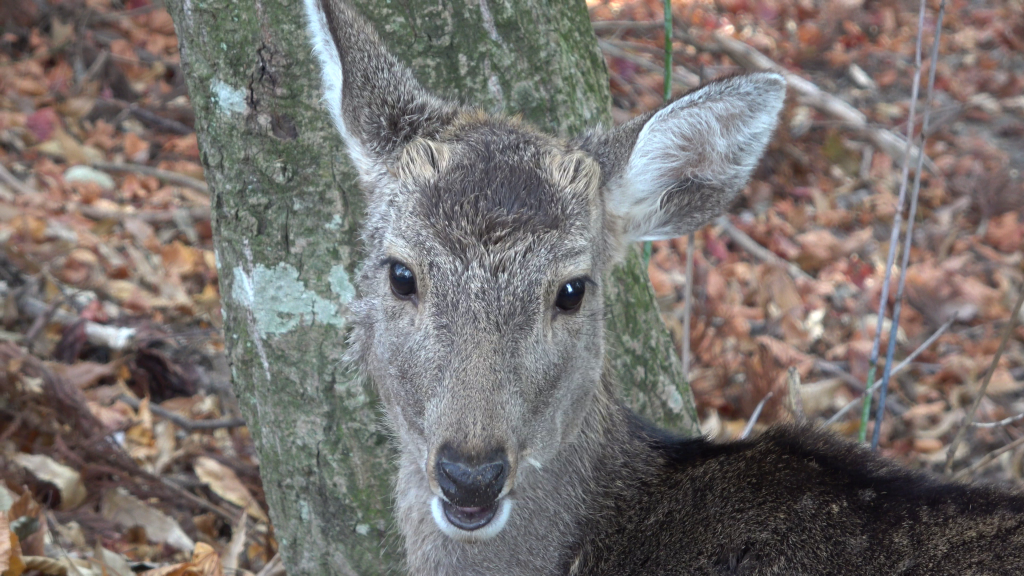
Hi!
With the ongoing COVID-19 situation, independent tourists remain banned from Japan, and there have been various reports that the deer, usually well-fed from a constant stream of international travelers, have had to adjust to less sembei snacks. As of 2022, there are a reported 1,182 official deer of Nara Park, which are managed by a special division of the city whose job it is to look after and control the population. However, even the division that manages the deer needs special permission to reduce their population due to their protected status a designated national treasure of Japan. As an example of the weight of this protection, in winter of 2021 a man was arrested in violation of a law the prohibits the destruction of cultural properties for killing a protected deer of Nara Park.
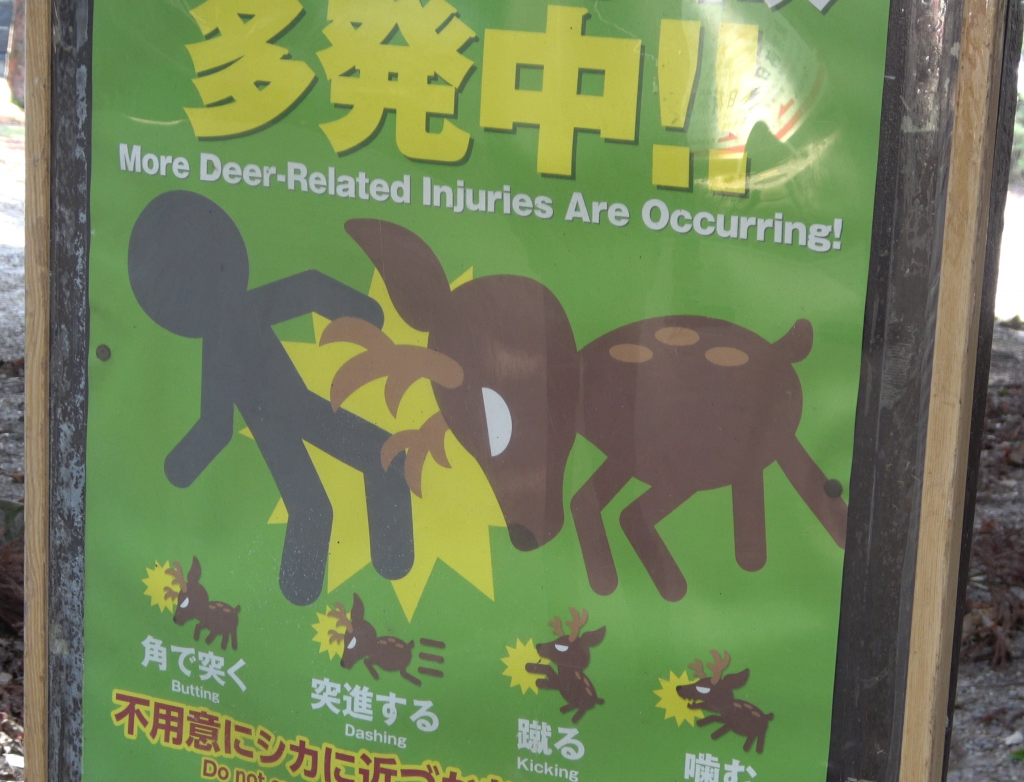
Deer may be cute and adjusted to being around humans, but these signs have been put up in Nara Park to remind people that they are still wild animals. Respect the deer and their space and you should be fine.
So, what are roots of the Nara Park and the sacred deer? Let’s take a brief closer look …
The Kasuga Shrine & the White Deer
Around 1,300 years ago, when country of Japan was still in its early formation, (specifically, the Asuka and Heian periods), the Nara Basin was host to a series of early Imperial capital cities in the locations of modern-day Asuka, Kashihara, and Nara City. One of the most influential familial groups of this early age was the Fujiwara Clan, who at times even exerted direct control over the Imperial Throne, steering the direction of the country in a way that sets them apart from many other important clans throughout history.
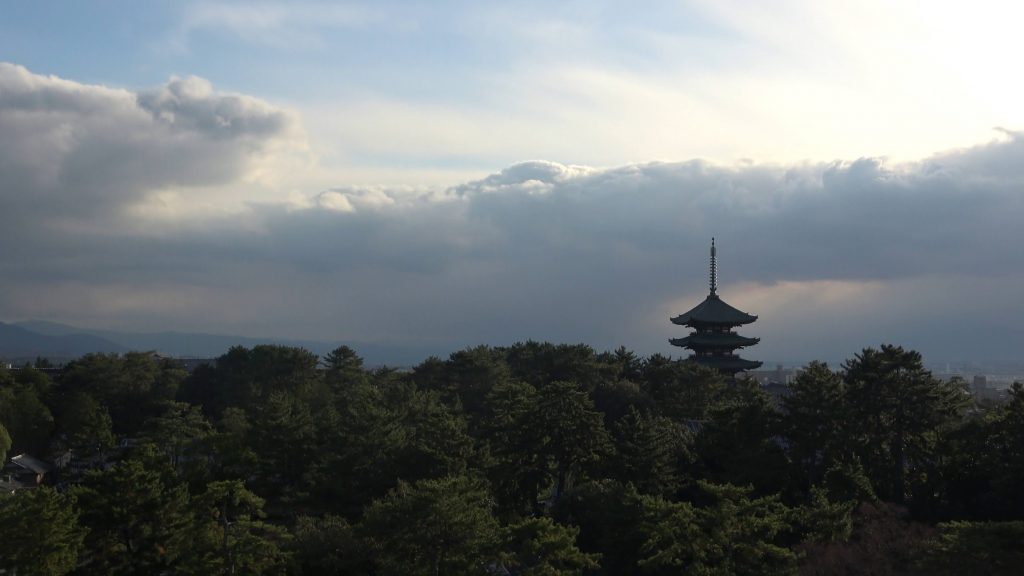
The tutelary shrine of the Fujiwara Family was Nara’s Kasuga-taisha (meaning “Kasuga Grand Shrine”). Records state that this shrine was founded after the Imperial Capital of Heijyo-kyo was built in Nara in the early 8th century. According to legend, a deity by the name of Takemikazuchi-no-mikoto, a god of thunder and swords, came to Nara from Ibaraki at the invitation of priests associated with the Fujiwara Clan. Takemikazuchi is said to traveled to Nara on the back of a large white deer, after which, the animal became a sacred animal revered as a messenger of the gods.

Mt. Wakakusa, meaning “Young Grass Mountain,” is located right next to the Kasuga-taisha Shrine. This unique mountain, often packed with deer, can be hiked by visitors and offers one of the best views over the Nara Basin.
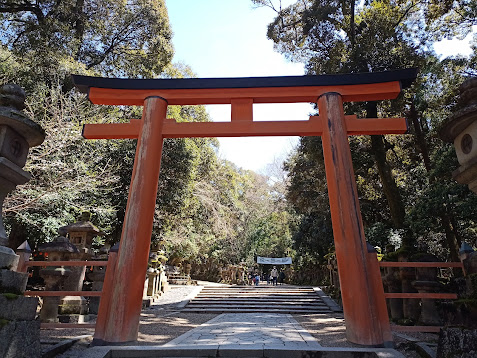
Nara’s Kasuga-taisha Shrine
Since that time, the deer has been revered as a sacred animal in Nara, with protection of these animals taken so seriously that to harm one was penalized by death in past times. Furthermore, the forest and much of that land that surrounded Kasuga-taisha was also designated as sacred and has been preserved as a reserve of ancient forest (known as the Kasugayama Primeval Forest) to this day. If you are looking for a nice day-hike, this forest is probably one of the most highly recommended locations in the prefecture to visit for its unusual forest scenery that has not been logged for thousands of years (and has been closed to hunting since 841 CE). The giant cedar trees and ancient Buddhist statues carved into the mountainside are just a few of the highlights of this fascinating natural area.
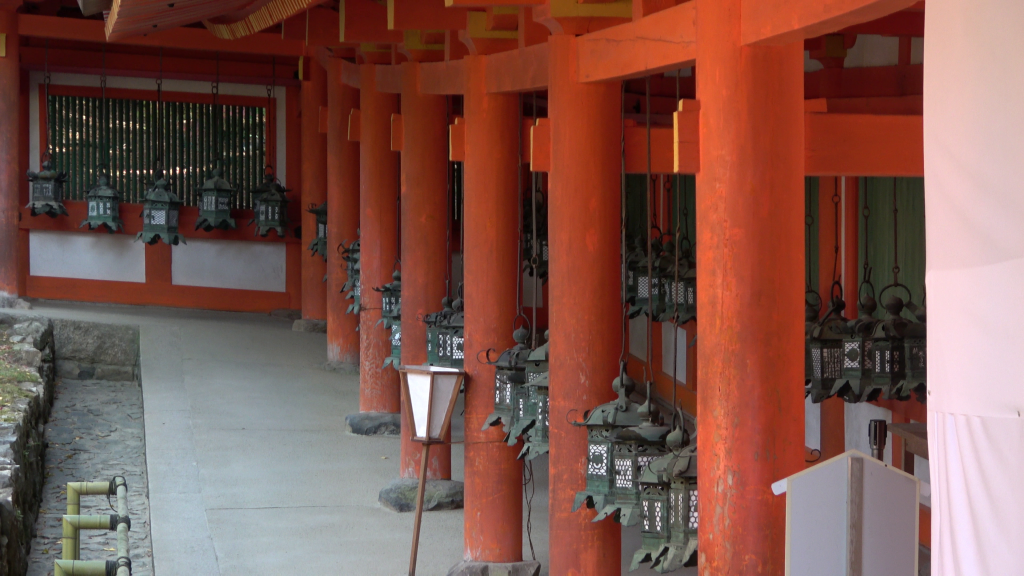
Hanging lanterns of the Kasuga-taisha Shrine

View overlooking the Kasugayama Primeval Forest from Wakakusayama.
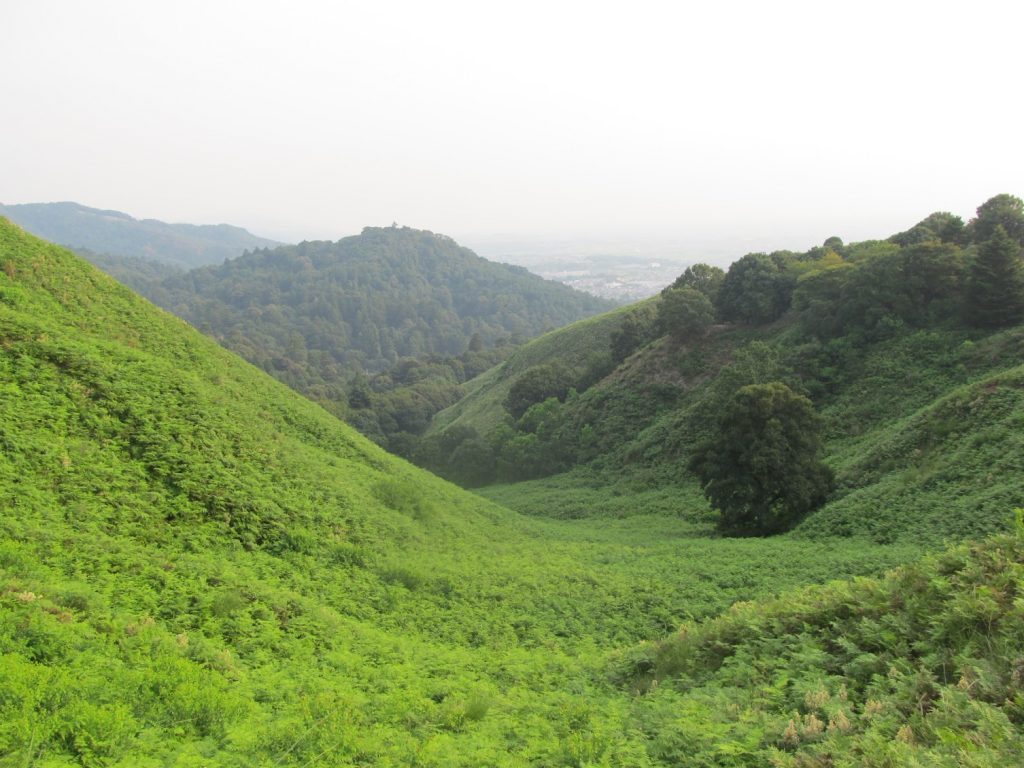
Mt. Wakakusa in the summer. There are several nice hiking routes up this mountain from Nara City below.
The Kasuga-taisha Shrine is officially stated to have been built on November 9, 768 CE under the instructions of Empress Shotoku and unusually enshrines 4 main gods. Eventually, 0ther Kasuga Shrines were also built throughout the country to venerate the same deities, from the Tohoku region in the north, all the way to the southwestern Kyushu region.
Fast forward 1,300 years later and the Kasuga-taisha Shrine, Kasugayama Primeval Forest, and Mt. Wakakusa have all been designated as UNESCO World Heritage Sites. But it is the population of sacred deer that seem to have taken over the spotlight as the cute mascots of Nara who live side by side with humans.
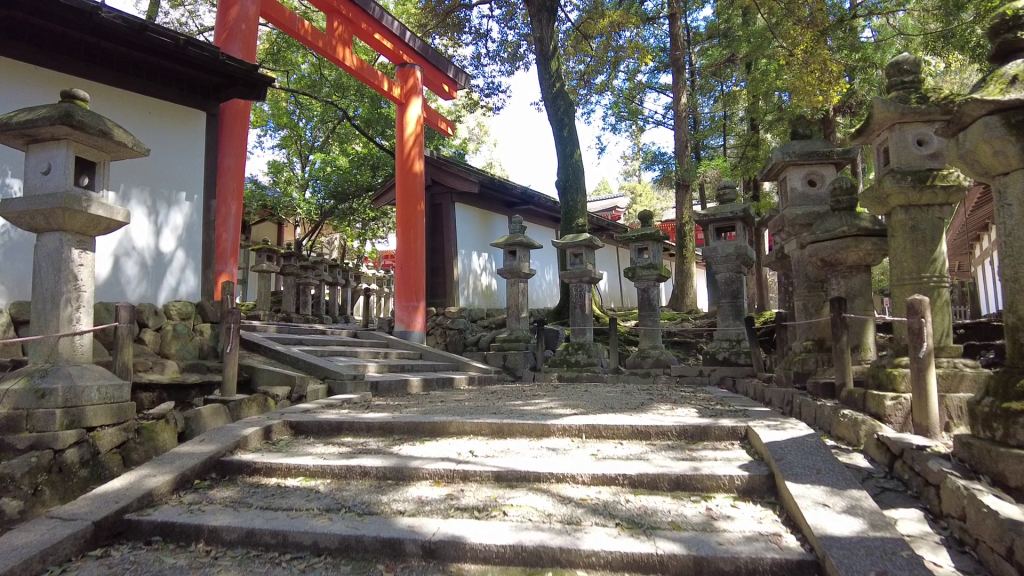
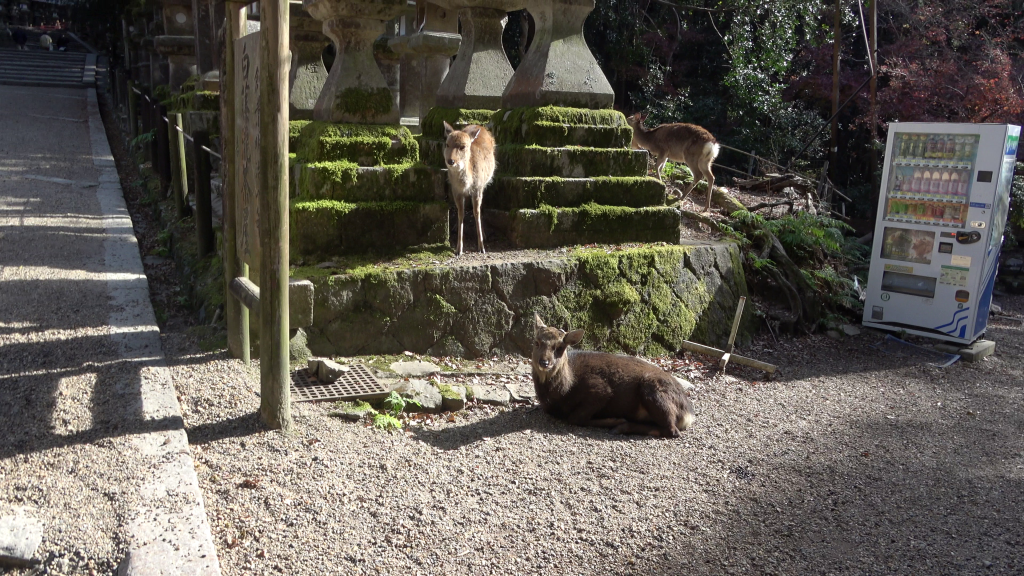
Hanging out on the grounds of Kasuga-taisha with some deer and a vending machine.
If you are interested in seeing the centuries-old artwork the represents the story of the founding of the Kasuga-taisha Shrine, the nearby Nara National Museum is a must-visit location. Relevant displays include a fascinating depiction of the White Deer steed of Takemikazuchi in the “Kasuga Deer Mandala,” which dates back to the 14th century and demonstrates the fusion of indigenous deity worship with Buddhism.
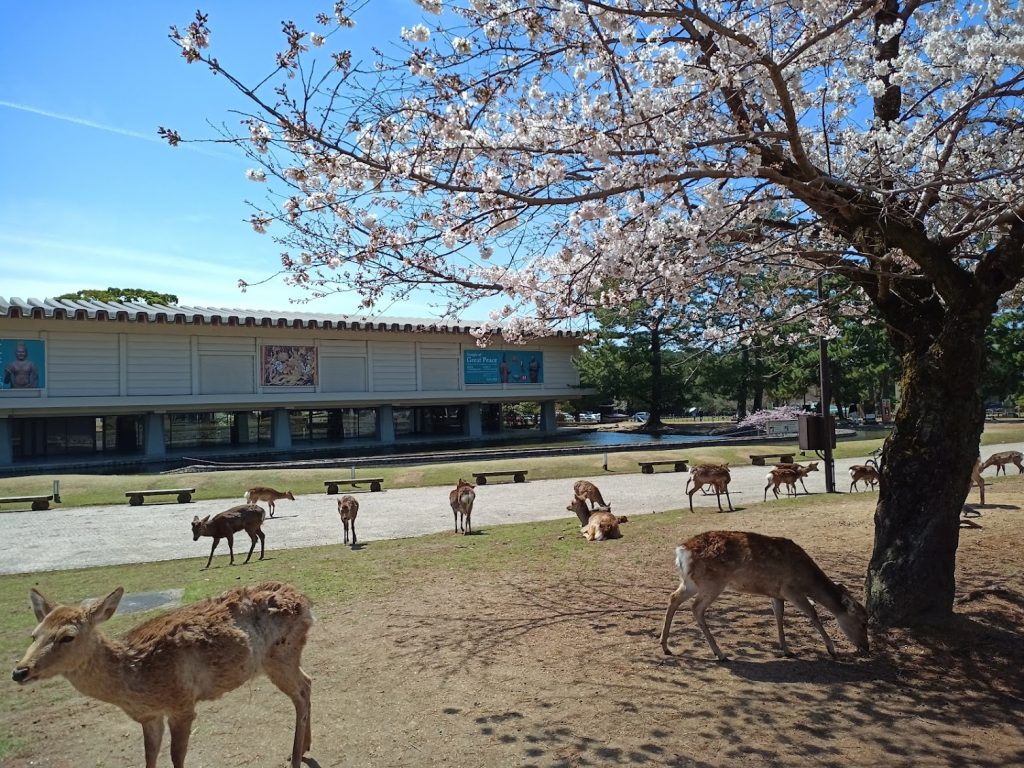
In front of the Nara National Museum.
So, on your first (or next) visit to Nara Park when you see the deer wandering about, blocking traffic or looking for senbei crackers, perhaps take some time to reflect on the 1,300 year history of this special relationship between human and animal present here. And while you are at it, consider how you will now be a part of this history through your own interactions with the unique deer of Nara.
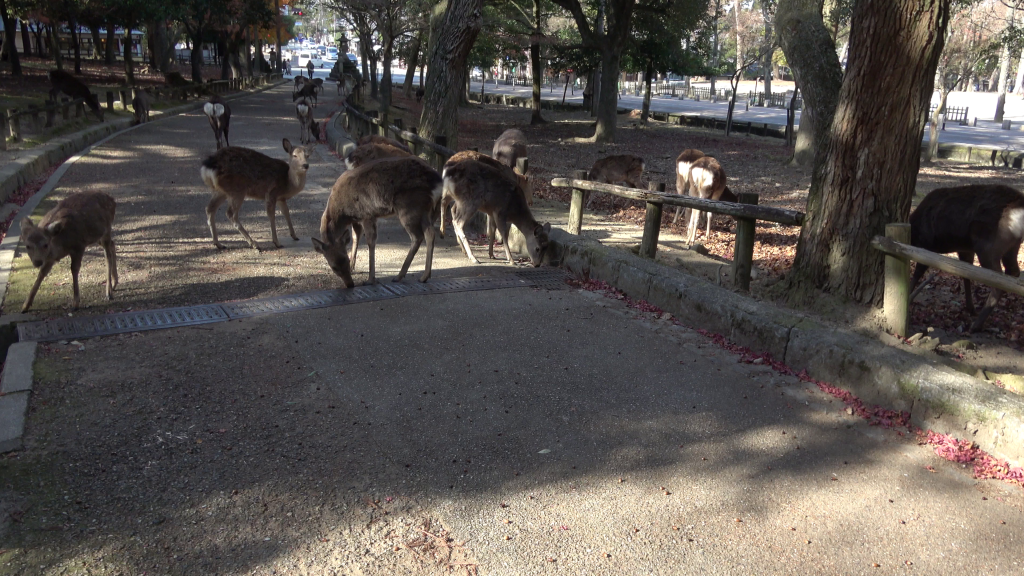
Access:
Nara Park is located under the cove of the mountains on the eastern side of Nara City. Kintetsu Nara Station will take you right up to the border of the park and from there it is about a 15 minute walk to get to the Kasuga-Taisha Shrine.

01
FIND YOUR FAVORITE
TRIP ON OUR WEBSITE.
SEND US AN INQUIRY.

02
PERSONALIZE THE TRIP
TO YOUR INTERESTS
WITH OUR CONSULTANT.

03
20% DEPOSIT TO CONFIRM.
BALANCE PRIOR TO ARRIVAL.
PAYMENT BY CC OR TT.

04
WE WILL
MEET YOU
AT THE AIRPORT.

05
DISCOVER THE
TREASURES!